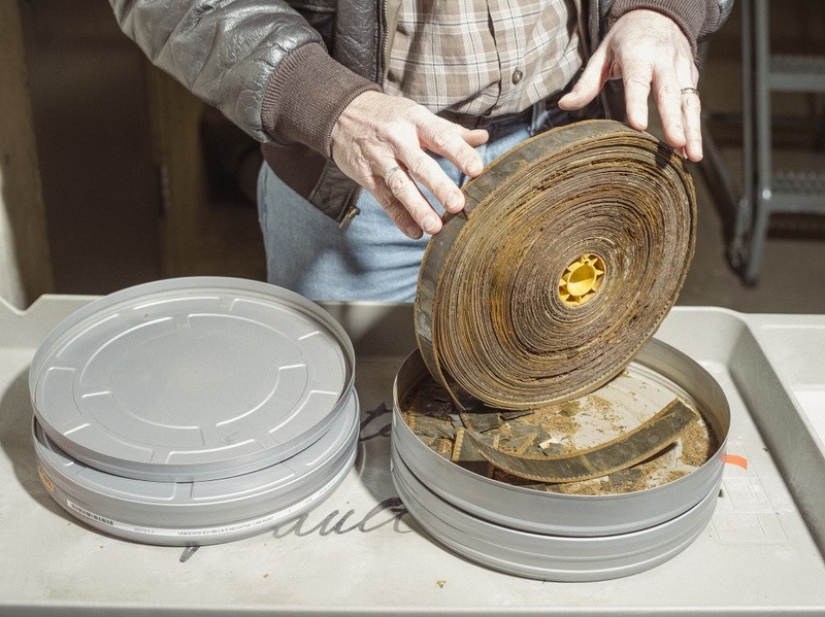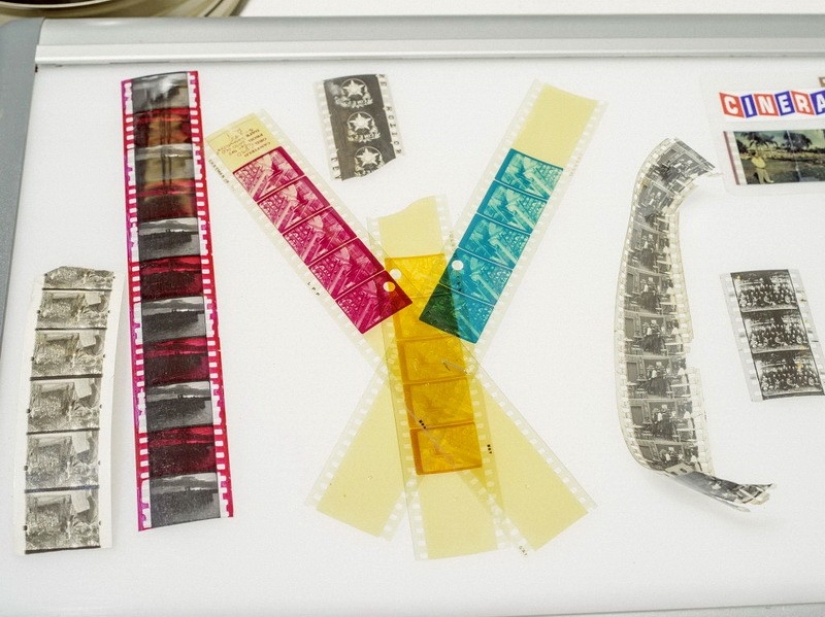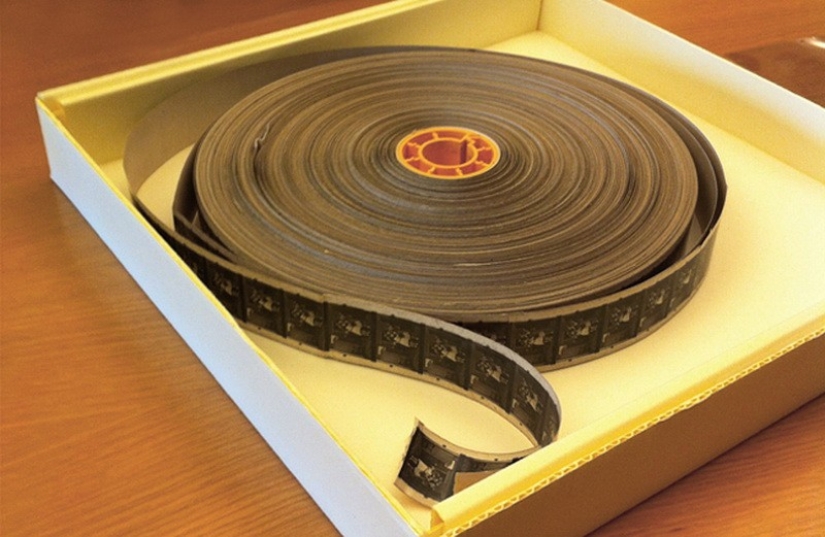How America Stores Movies in Case of the End of the World
Categories: Cinema
By Pictolic https://pictolic.com/article/how-america-stores-movies-in-case-of-the-end-of-the-world.htmlIn the event of an unforeseen (or, worse, foreseen) end of the world, humanity has several ways to help restore the culture of civilization. For example, in the United States there are special vaults that contain the most important works of cinema. There are several such organizations: one of them was founded by George Eastman, the creator of Kodak, the other belongs to the New York Museum of Modern Art. Popular blockbusters are most often kept in the personal archives of major studios like Columbia, Warner Bros. and Universal.
(Total 18 photos)
 Source: JJournal/kak-eto-sdelano
Source: JJournal/kak-eto-sdelano

1. But there are also many small, independent films whose creators most often cannot afford such “insurance”. Such projects come to the aid of a repository associated with the US Library of Congress, which accepts thousands of tapes free of charge into its archives, where they are sent after careful restoration and digitization. The vault, founded by the son of one of the founders of HP Corporation (Hewlett-Packard), occupies the building of a decommissioned post-Cold War bunker, which was intended for the post-apocalyptic storage of the lion's share of the capital of the East Coast. A correspondent for Wired magazine visited this amazing place and learned the path films go before untimely ending up on the shelves of history.

2. George Willeman runs an archive where old films are kept. It has more than 160,000 fragile flammable reels at its disposal, on which various masterpieces of American cinema are recorded - from the Great Train Robbery of 1903 to very recent films. And every week George accepts new arrivals.

3. Tapes enter the vault through public, charitable or private organizations and are only a small part of the 1.5 million film, television and video collection, which has more than a hundred rooms. Special conditions are maintained in each room - a temperature of 4 degrees Celsius and a relative humidity of 30% - all in order to keep the fragile film in the best possible condition.

4. But there is a much more serious problem than natural wear - the film ignites very easily and explodes. Because of a single spark, everything accumulated in the archive can burn out in a matter of minutes, and it will be almost impossible to stop such a fire.

5. To avoid disaster, movie cabinets are separated by reinforced concrete partitions. At the same time, the archive itself is under the constant close supervision of the fire safety system - in which case a strong stream of water, about 90 kilograms per square inch, will fall on the racks affected by the fire.

6.

7. Most of the material (films, video cassettes, handwritten copies of scripts, posters, radio recordings, music, and more recently games) requires restoration, and sometimes complete restoration, before being sent to the archive. The process of "rejuvenation" can take years and cost tens, sometimes hundreds of thousands of dollars. The employees of the repository are constantly faced with a lack of resources - the number of incoming works disproportionately exceeds the so-called. the "throughput" of the laboratory where they are restored.

8.

9. According to Rob Stone, curator of the film department, he was offered several times to simply refuse some new products in order to reduce the burden on employees: “I can’t do that. There are things that will simply disappear if we do not take them. It is better to spend ten years on restoration and then see this movie someday than to let it disappear safely. Mike Mashon, one of the chief managers of the vault, is giving a tour - just walk along the corridors, look into the rooms, and it becomes clear where such a reverent policy came from. Literally 100 years of film history, from Frankenstein to The Big Lebowski, sits on one table, and next door is a 205-seat art deco theater where contemporary films can be run through a 1940s projector. And how, under such conditions, can one refuse to replenish the monumental collection?

10.

11. Nevertheless, archivists select works according to certain rules. There is a special act that regulates the criteria for paintings worthy of being in the forefront of the queue for preservation. Each year, this act compiles a list of the twenty-five most significant films (they must be at least ten years old), which is announced by the head of the Library of Congress.

12. Restoration of a painting can take place in different ways. Some tapes require a complete photochemical restoration - for this, the laboratory actually produces a new film and gradually "copies" the original film material. Those that are not damaged are simply scanned and converted to a digital file. Regardless of whether the film needs to be restored, it is first soaked in a bath of tetrachlorethylene - this allows you to patch up microscopic cracks and scratches. Then the tape passes into the hands of an employee who manually “repairs” the film with special equipment and seals large cracks. Film restoration can take months, while Remarque's film adaptation of All Quiet on the Western Front (1930) took ten years to restore.

13.

14. In the hall where cassettes are digitized, robots reign. On the shelves here are video players of various formats: both well-known (VHS, Betamax) and rare ones, like Digibeta, Hi8 or DVCAM. Human participation is not required, the whole process is fully automated - four massive machines quickly sort through the cassettes with tenacious "paws", rewriting films to disks. They say that over the decades of work, iron "writers" managed to process more than half a million cassettes.

15.

16. But not everything is so simple - even though the preservation process itself is well established, the time factor plays an important role. VHS from the seventies and eighties are already beginning to deteriorate and degauss, losing the information recorded on them. Stone is sure that the main task of the “cassette shop” is to simply overtake time and have time to rewrite as many cassettes as possible before they die: “Some cassettes no longer work, so we are dealing with a very short-lived format. We can’t waste time, otherwise in a couple of years it will all turn into a useless pile of plastic.”

17. More modern formats - JPEG 2000 and MP4 - are stored on the first floor, in a huge server room. Stone currently has about eight petabytes (8 million gigabytes) of data in storage, Stone said. The main attraction of this department is that 75 miles of state-of-the-art fiber optic wiring stretches from the server room to the Washington Capitol - which allows you to access the archive directly from the Library of Congress. The average processing time for a request is three minutes.

18. "I still can't believe it all works," Mashon says. In fact, it all looks like the scenery of a sci-fi movie from the eighties, the spectacle is truly impressive. But I want to believe that the services of such archives will not be needed by mankind.
Keywords: America | Doomsday | Film | Storage
Post News ArticleRecent articles

Girls from our collection could easily compete for the title of "Miss universe". And this despite the fact that they are all ...

Young Milla Jovovich in the arms of Michael Jackson - this shot from almost thirty years ago, published on the actress’s ...
Related articles

Palmateer felicity (Felicity Palmateer) began to photograph stunning mini-movie, which conquers the waves in Hawaii, Fiji and ...

The traditional story of the American Civil War is revenge by historical accounts, told on behalf of men who fought as Yankees or ...

1950's years, often called the Golden era of American history, a time of happiness and prosperity — despite the racial ...

From explosions at the slightest collision to endless drifts without a scratch, cinema has long since devised its own laws of ...